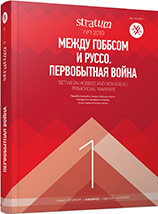Стратегии обработки каменного сырья в начале верхнего палеолита Горного Алтая (по материалам культурного горизонта ВП2 стоянки Кара-Бом)
Treatment Strategy of Stone Raw Material in the Initial Upper Palaeolithic of Gorny Altai (based on materials of cultural horizon UP2, Kara-Bom site)
Author(s): Natalia E. Belousova, Evgeny P. Rybin, Alexander Yu. FedorchenkoSubject(s): History, Archaeology
Published by: Издательский дом Stratum, Университет «Высшая антропологическая школа»
Keywords: Gorny Altai; Initial Upper Palaeolithic; treatment of stone raw material; blade knapping; knapping sequence; refitting; raw material unit method; technological analysis;
Summary/Abstract: The article presents the results of a new research cycle devoted to the reconstruction of stone raw material treatment strategies in the early stages of the Kara-Bomian tradition in Gorny Altai. The study was based on the analysis of materials from the cultural horizon UP2 of the Kara-Bom site (50,000—45,000 yrs cal BP). The study of the industry showed that the primary knapping was aimed exclusively at the production of blades with a straight profile. The blades obtained in the process of bidirectional knapping of flat-faced, cylindrical and narrow faces cores served as the basis for secondary cores for bladelets and tool blanks — retouched blades, points with ventral base thinning, end scrapers, etc. The utilization strategy of flat-faced cores reflects the preservation of elements of non-volumetric blade knapping in the technological repertoire of the inhabitants of the site. The knapping control in the production of blades with right proportions was achieved by combining various techniques of fracture zone preparation, including special one — pecking.
Journal: Stratum plus. Археология и культурная антропология
- Issue Year: 2019
- Issue No: 1
- Page Range: 225-250
- Page Count: 26
- Language: Russian
- Content File-PDF

